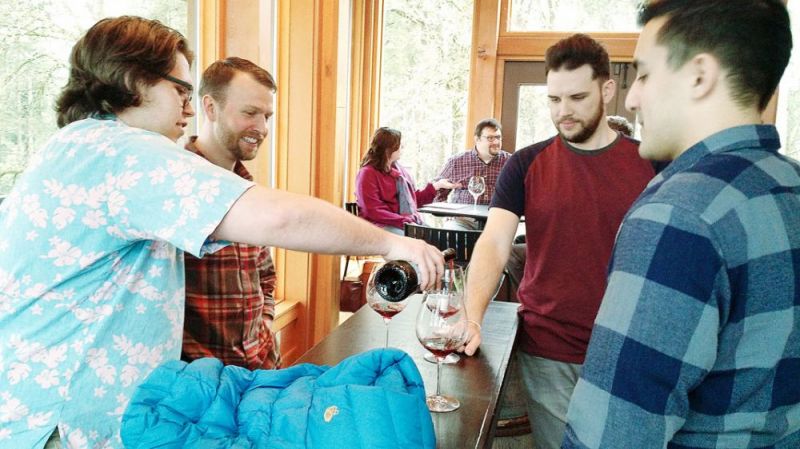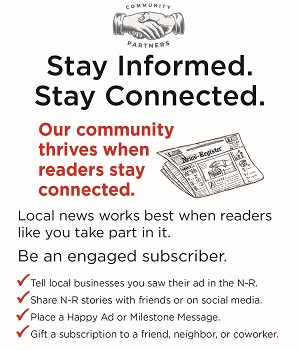Reid Oliver: Driving wine consumption
As the last of the Millennial Generation joins the ranks of the legal drinking age, marketers around the world scramble to understand this extremely large, and historically diverse faction of the population.
While an exact age range for Millennial Americans varies, most generally agree the group includes young adults currently between the ages of 20-35 years of age. What nobody can dispute is that this YOLO (You Only Live Once) Generation will be packing the most consumption clout (ie: buying power) in the United States for many years to come. The roughly 80 million Americans who make up the Millennial Generation will account for almost 30 percent of total consumer product dollars spent by 2020. Come with me as I examine what we think we know about Millennials in relation to their wine buying habits on the national level.
According to research by the Wine Market Council, in just two years’ time, Millennial wine consumption has increased by 10 percent compared to only 5 percent growth by Generation X and a six percent decrease by the Baby Boomer Generation. Millennials now drink the greatest volume of wine annually, at nearly 160 million cases, or over 30 percent greater volume than the second place Baby Boomer Generation. To put it plainly, Millennials drank more than two out of every five bottles of wine consumed in America in 2015.
Millennials aren’t cheap, but they are thrifty: They are after a good brand story, and a perceived value at the same time. Just drop by your favorite bar or restaurant and observe the high volume of “tall boy” beer cans consumed on any given night.
Millennials are likely to share their experience with a wine or wine brand online, and frequently will use their smart phone while making wine purchases. Millennials drink less domestic wine than their Baby Boomer counterparts, but when they do, they tend to gravitate toward a Washington, Oregon or New York offering. Millennial wine drinkers are increasingly female. In a recent Nielsen study, it was determined that as high as 66 percent of Millennial wine drinkers are women. Women aren’t just sipping one glass at a time. Of high frequency Millennial Drinkers (over 3.1 glasses per sitting) two-thirds were women.
Nielsen introduced some of the most interesting beverage trends of 2015, and among them are giant increases in sparkling wine purchases (most notably, a 36.5 percent increase in Prosecco sales year after year), and a nearly 14 percent increase in 3L boxed wine sales. Maybe it’s just some kind of crazy 20-year cycle of Franzia coming back into popularity, or perhaps Millennials are helping buck some deeply engrained traditions of the often snooty world of wine. On the flip side, however, a majority of Millennials surveyed said they would not have interest in, or purchase wine from a can. So perhaps they aren’t so radical after all.
Millennials are 27 percent more likely than the average adult (aged 21 and older) to consider themselves sophisticated, 45 percent more often agreeing that risk-taking is exciting to them, and 44 percent more inclined to agree they live a lifestyle that impresses others.
Statistics like these make it easy to understand why Millennials, morethan other generations, are theoretically more inclined to try new products, and believe that higher price is positively correlated with better quality. Maybe not surprising, due to economic restraints, Millennials were far less likely than other generations to join a wine club during visits to wineries. Perhaps this also has to do with a desire to try new things to a certain extent as well.
Much like the dilemma currently faced by country clubs throughout the United States, wineries will soon be required to adapt to the preferences and trends of young consumers, or run the risk of having their customer base eventually die off. Millennials are 38 percent more satisfied with purchasing organic food and drinks. Wineries may soon feel pressure from consumers to adapt to their new and ever-changing standards for ethical products, and create more natural and organic-style wines in the coming years.
For wineries and marketing specialists alike, perhaps the best approach for earning brand loyalty from Millennials is to allow them to feel part of the process, and to stay engaged with them through online and social media channels. The vast majority of respondents in a recent study by Crowdtap reported these factors were important, and over 80 percent of the same respondents stated they had purchased an alcoholic beverage they had seen online.
While generations come and go (and continue to morph, and grow), there is no denying that Millennials are a curious bunch currently holding the keys to the future direction of wineries all over the world. Just think about the precipitous rise in availability of organic and gluten-free products, Kombucha, the explosion of cider and an emerging spike in the alcoholic soda category over the past several years. These are all trends driven by the Millennial Generation and this is just the beginning.
It will be wise for the wine industry to embrace these consumers, listen to their desires and help satisfy their continual thirst for knowledge. After all, these Millennnial wine drinkers may be drinking wine costing an average of $7.50 a bottle today, but as their earning potential rises, so, too, will their yearning to “trade up” for higher end bottlings.









Comments